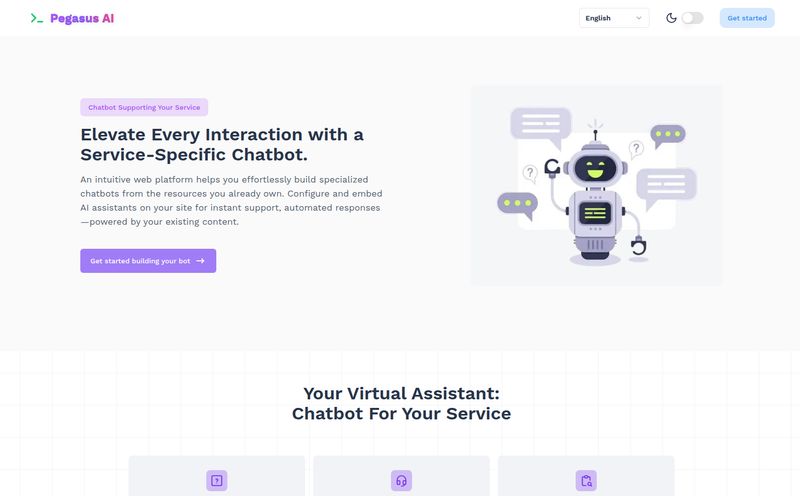If you’re in the dev world, you know the sound. That digital ping of another notification. Another security scan finished, another list of potential vulnerabilities. It’s a mountain of alerts, and we're all supposed to climb it. Every. single. day. We've all been there, staring at a list from Snyk or SonarQube, wondering how much is a real five-alarm fire and how much is just… noise.
For years, the SEO and dev ops world has been chasing the dream of automation. We want tools that don’t just find problems but actually help fix them. We want to speed up, not get bogged down. And that’s where things get interesting. I've been hearing whispers about a tool called Pixeebot, positioning itself not as another alarm system, but as an actual team member. An automated product security engineer. A bold claim, right? So, I had to see what the fuss was about.
So, What on Earth is Pixeebot?
Think of Pixeebot as a new kind of colleague. It’s an AI-powered bot that joins your team, but instead of asking where the coffee is, it gets straight to work. Its whole job is to read the reports from your existing security scanners, figure out what’s a genuine problem, and then—and this is the cool part—write the code to fix it. It then submits its work just like any other developer would: via a clean, merge-ready pull request.
It’s designed to be an AI security champion, sitting right inside your development workflow, helping you ship high-quality, secure code without slowing you down. In a world buzzing with GenAI, this feels like one of the first genuinely practical applications for development teams that I've seen in a while.
The Never-Ending Battle Against Alert Fatigue
I remember a project a couple years back where our security scanner was, to put it mildly, overzealous. We'd get hundreds of alerts a week. The developers started getting numb to them. It's like the boy who cried wolf; after the tenth false positive for a low-priority issue, you start to ignore the real warnings. This “alert fatigue” is a genuine productivity killer and, honestly, a security risk in itself.
Most tools are great at pointing fingers. They'll tell you, 'Hey, line 47 has a potential SQL injection vulnerability!' Great. Thanks. Now a developer has to stop what they’re doing, context-switch, investigate the alert, confirm it's real, figure out the best way to fix it, write the code, and then submit it for review. Pixeebot’s entire philosophy is to short-circuit that tedious loop.
How Pixeebot Actually Changes Your Workflow
This isn't just about another dashboard. The beauty of this platform is how it slots into the processes you already have. It’s less of a nagging manager and more of a helpful specialist who just quietly gets things done.

Visit Pixeebot
It Triages and Fixes, Not Just Flags
The first thing Pixeebot does is connect to your current tools—think Sonar, Snyk, Semgrep, and the like. It ingests all those alerts that are causing you so much stress. But instead of just passing them along, it performs an expert triage. It uses its intelligence to filter out the false positives and identify the alerts that truly matter. Then, it goes a step further and generates the actual code fix. This is a profound shift from problem-finding to problem-solving.
It Speaks the Language of Developers: Pull Requests
Here’s what I personally love. Pixeebot doesn’t send you an email report or demand you log into yet another platform. It communicates in the native language of developers: the pull request (or merge request, depending on your system). A developer gets a notification for a PR from Pixeebot, they can see the exact changes proposed, review the fix, and if it looks good? They just click 'Merge'. It’s a seamless, almost frictionless experience that respects the developer's time and focus.
The Good, The Bad, and The Pricey
Alright, no tool is perfect. Let's get into the nitty-gritty. I've found that Pixeebot's approach is genuinely refreshing. The proactive and continuous nature of its work means you're not waiting for a quarterly audit to find and fix things; security becomes a constant, low-effort background process. The automated remediation is a huge time-saver, freeing up your senior devs to work on feature development instead of chasing down minor security patches. For large organizations, the support for private AI models and self-hosted deployments is a massive plus, addressing data privacy concerns head-on.
However, let's talk about the potential downsides. The pricing is contributor-based. For a small, tight-knit team, this is probably fine. But if you have a large team with dozens of active committers, that monthly cost could start to add up quickly. You'll need to do the math. It also relies on your existing third-party scanners. It's an enhancer, a force multiplier, not a standalone scanner itself. So, you still need your Snyks and Semgreps in place. Finally, like any powerful tool, it needs a bit of initial configuration to make sure its fixes align perfectly with your internal coding standards and security policies.
A Quick Look at Pixeebot's Pricing
Transparency is king, so let's break down their plans. They've kept it pretty simple, which I appreciate.
| Plan | Price | Best For | Key Features |
|---|---|---|---|
| Pro | $29 / month / contributor | Smaller teams and power users | Unlimited PRs, 1 scanner integration, Auto-Triage, and standard support. |
| Enterprise | Custom Pricing | Large organizations needing scale and security | Unlimited everything, advanced configuration, custom workflows, dedicated support, and self-hosted options. |
The Pro plan seems like a great entry point to automate the security workflow for a single team. The Enterprise plan is clearly for businesses where security, compliance, and customisation are non-negotiable. You can find more details on their official pricing page.
Frequently Asked Questions about Pixeebot
I had a few questions myself, and here are some answers I dug up.
How does Pixeebot define an 'active contributor'?
An active contributor is counted if they've pushed a commit to a branch that Pixeebot is monitoring. The key is that they only count contributors if they've made a commit to at least one private repository where Pixee is installed. Public repo contributions dont count against your total.
Is my code secure with Pixeebot?
This is a big one. Pixeebot emphasizes security, especially for its Enterprise clients. They offer deployments using private AI models and even a fully self-hosted option, meaning your code never has to leave your own infrastructure. They seem to take this very seriously.
Do I need to get rid of my current security scanners?
Nope. In fact, you need them. Pixeebot integrates with tools like Sonar, Snyk, and Semgrep. It sits on top of them, takes their output, and makes it actionable. It’s a symbiotic relationship.
Are there any deals for startups or open-source projects?
Yes! Their pricing page mentions that they offer special pricing for early-stage startups or security consultants, and you should reach out to them. For open-source, it seems to be a big part of their ethos, so it's definitely worth inquiring about special access.
So, Is Pixeebot Worth the Investment?
After looking at it, my professional opinion is... it depends, but it's leaning heavily towards 'yes'. If your team is small and disciplined, maybe you can get by manually. But if you're a growing team or a large enterprise feeling the pain of security backlogs and developer friction, Pixeebot presents a very compelling argument.
It’s not just another tool; it’s a workflow philosophy. By automating the tedious parts of code security—the triage and the basic fixes—it frees up human brainpower for what it's best at: building great things and solving complex problems. It turns security from a roadblock into a streamlined part of the development lifecycle. And in today’s world of constant pressure to ship faster, that might just be the most valuable thing of all.



